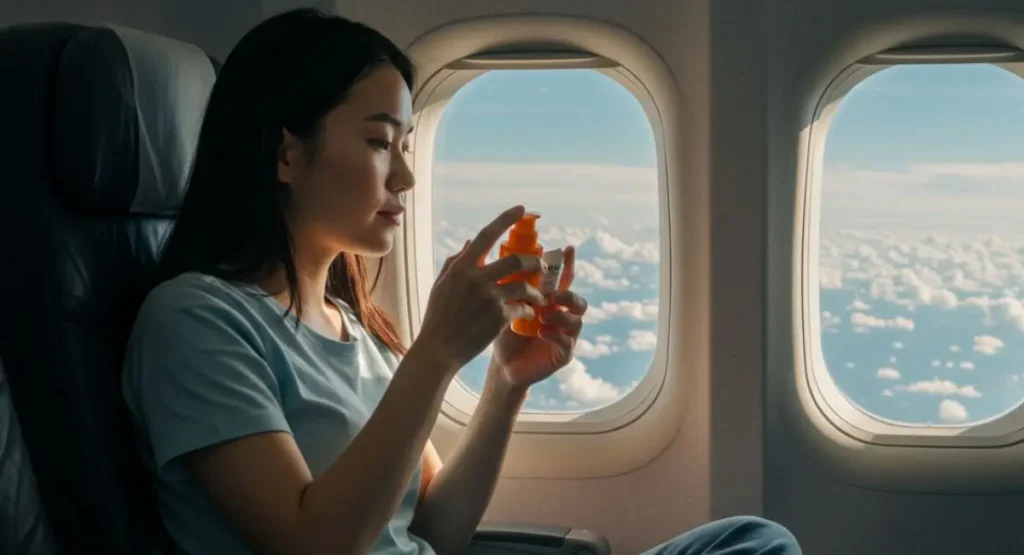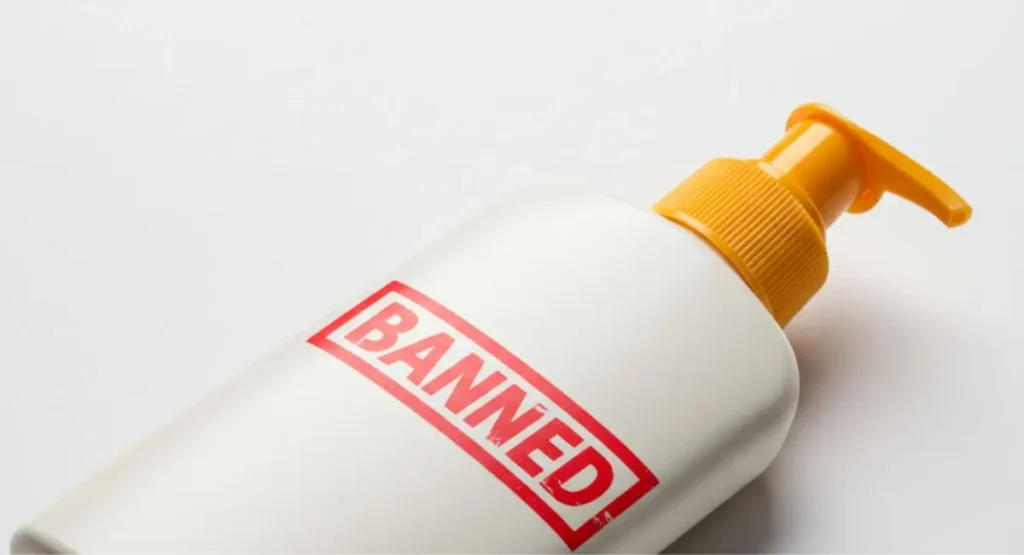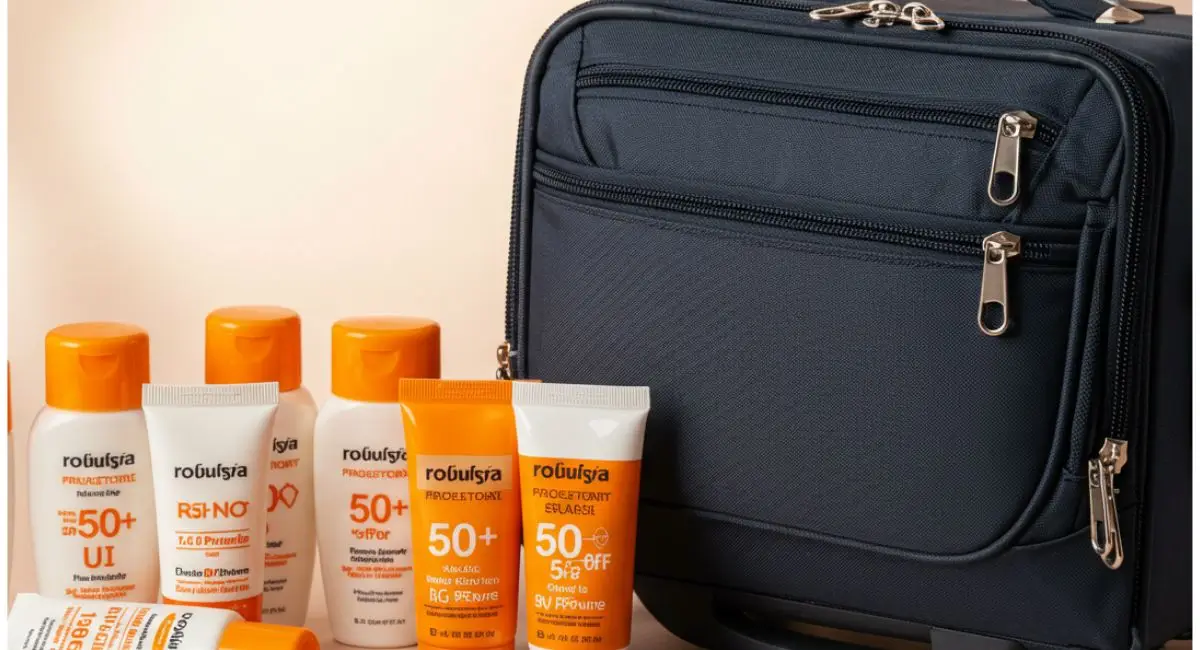Can You Bring Sunscreen on a Plane? TSA Rules Explained in 2025
Table of Contents
As summer approaches and vacation plans take shape, many travelers find themselves wondering: can you bring sunscreen on a plane? With skin protection being essential regardless of your destination, understanding the Transportation Security Administration (TSA) regulations around sunscreen is crucial for hassle-free travel. In this comprehensive guide, we’ll clarify the rules, provide practical packing tips, and ensure you never have to sacrifice sun protection during your travels.
Quick Answer: Yes, But There Are Rules
Yes, you can bring sunscreen on a plane, but how you pack it depends on whether you’re carrying it in your checked luggage or carry-on bag. The TSA classifies sunscreen as a liquid, which means it falls under the liquid restrictions for carry-on items.
TSA Liquid Rules for Carry-On Sunscreen
When packing sunscreen in your carry-on luggage, you must follow the TSA’s 3-1-1 liquids rule:
- 3.4 ounces (100ml) or less per container
- 1 quart-sized, clear, resealable plastic bag
- 1 bag per passenger
This means if you want to bring sunscreen in your carry-on bag, each container must not exceed 3.4 ounces. All your liquid containers must fit within a single quart-sized bag, which you’ll need to remove from your carry-on for separate screening at the security checkpoint.

Checked Baggage Sunscreen Rules
The good news for sun-conscious travelers is that sunscreen in checked luggage has no size restrictions. You can pack full-sized bottles of sunscreen in your checked bags without worrying about the 3.4-ounce limit that applies to carry-ons.
However, there’s one important exception to be aware of: spray sunscreens. Because they’re pressurized, the FAA limits the total amount of aerosols in checked bags to 70 ounces (2 kilograms) per passenger. Individual containers can’t exceed 18 ounces (500ml).

Carry-On vs. Checked Luggage: Which Is Better for Sunscreen?
Each option has its advantages and disadvantages:
Carry-On Pros and Cons
Pros:
- Immediate access during your journey
- No risk of leakage damaging your packed clothes
- Available as soon as you arrive at your destination
Cons:
- Limited to 3.4 ounces per container
- Takes up precious space in your quart-sized liquids bag
- May need to purchase multiple small containers for longer trips
Checked Luggage Pros and Cons
Pros:
- No size restrictions (except for aerosols)
- Can bring full-sized bottles
- More economical for longer trips
Cons:
- Not accessible during flight
- Risk of leakage in your suitcase
- Risk of luggage loss or delay
Special Considerations for Different Sunscreen Types
Not all sunscreens are created equal in the eyes of the TSA. Here’s what you need to know about different formulations:
Liquid Sunscreen
Standard liquid sunscreens fall squarely under the 3-1-1 rule for carry-ons.
can you bring spray sunscreen on a plane
As mentioned above, spray sunscreens have additional restrictions for checked luggage due to being pressurized. They’re still subject to the 3-1-1 rule in carry-ons.
Solid Stick Sunscreen
Here’s a travel hack: solid stick sunscreens are not subject to liquid restrictions. You can bring stick sunscreens of any size in your carry-on without counting them toward your liquids allowance.
Powder Sunscreen
Like stick formulations, powder sunscreens aren’t considered liquids by the TSA. However, powders greater than 12 ounces may require additional screening.
International Travel Considerations
The rules we’ve discussed so far apply to flights departing from and arriving in the United States. However, if you’re traveling internationally, be aware that:
- Other countries may have different regulations about sunscreen
- Some destinations, particularly those with coral reefs, have banned certain sunscreen ingredients
- Return flights from international locations will be subject to that country’s security rules
For example, Hawaii and destinations like Key West, Palau, and parts of Mexico have banned sunscreens containing oxybenzone and octinoxate due to their harmful effects on coral reefs. Always research your specific destination’s rules before traveling.
Practical Tips for Traveling with Sunscreen
To ensure you’re never caught without sun protection, consider these practical solutions:
1. Travel-Sized Options
Many popular sunscreen brands offer TSA-compliant travel sizes under 3.4 ounces. These are perfect for short trips or as your “in-flight” supply.
2. Refillable Containers
Invest in high-quality, leak-proof, refillable containers that meet TSA size requirements. Transfer your favorite sunscreen into these before traveling.
3. Buy at Your Destination
If you’re traveling to a populated area, consider purchasing sunscreen after arrival. This saves packing space, though it may be more expensive or difficult to find your preferred brand.
4. Diversify Your Packing
A smart strategy is to pack a small container in your carry-on for immediate use upon arrival and larger bottles in your checked luggage for the remainder of your trip.
5. Don’t Forget Alternative Sun Protection
Remember that sun protection isn’t limited to sunscreen. Pack UPF clothing, hats, and sunglasses to reduce your reliance on liquid sunscreen.
Why Sun Protection Matters During Travel
Regardless of how you pack it, bringing sunscreen on your travels is essential. Travelers often experience increased UV exposure due to:
- Higher altitudes during flights (UV radiation increases approximately 5% with each 1,000 feet of elevation)
- Different latitudes that may have stronger UV indexes than your home location
- More time spent outdoors sightseeing, swimming, and exploring
- Reflection from water, sand, or snow, which can amplify UV exposure
Skin damage from inadequate sun protection can quickly derail your vacation plans and have long-term health consequences.
Environmentally Friendly Sunscreen Options for Travelers
As awareness of environmental issues grows, many travelers are seeking reef-safe and eco-friendly sunscreen options. These typically:
- Avoid oxybenzone and octinoxate
- Use mineral blockers like zinc oxide and titanium dioxide
- Come in plastic-free or reduced-plastic packaging
- Are biodegradable and aquatic ecosystem-friendly
Not only are these better for the environment, but they also ensure you’ll be compliant with regulations in destinations that have banned certain sunscreen chemicals.
Final Thoughts: Can You Bring Sunscreen on a Plane?
So, Can You Bring Sunscreen on a Plane? yes, you can bring sunscreen on a plane, either in your carry-on (3.4 ounces or less per container) or in unlimited quantities in your checked luggage (with some restrictions for aerosols).
Don’t let TSA regulations prevent you from protecting your skin. With a bit of planning, you can ensure you’re never without adequate sun protection, wherever your travels take you.
Remember that the peace of mind that comes from knowing you’re protected from harmful UV rays is worth the minor inconvenience of navigating these regulations. Safe travels and sun-safe adventures!
Have you ever had issues bringing sunscreen through airport security? Share your experience in the comments below!
Disclaimer: TSA regulations are subject to change. While this information is accurate as of our publication date, always check the official TSA website before traveling for the most current guidelines.





